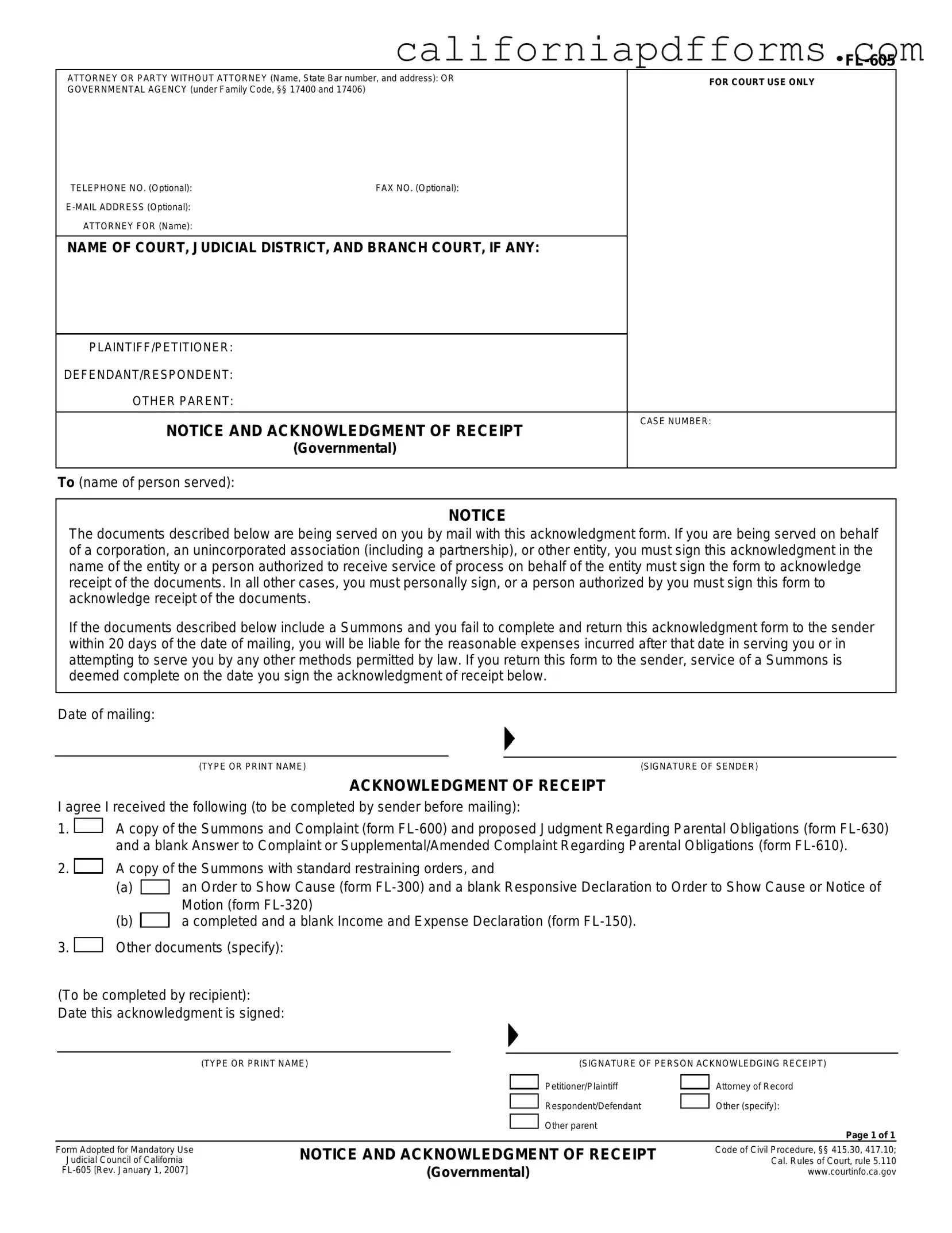The California FL-605 form is used to acknowledge receipt of legal documents in family law cases. It is particularly relevant when documents are served by mail. This form helps ensure that all parties involved are aware of the proceedings and have received the necessary documentation, such as a Summons and Complaint.
The FL-605 form must be signed by the person receiving the documents. If the documents are being served to a corporation or other entity, an authorized representative must sign on behalf of that entity. In individual cases, the recipient or someone they authorize can sign the form.
If you fail to complete and return the FL-605 form within 20 days of receiving the documents, you may be responsible for any additional costs incurred in serving you. This includes expenses for alternative methods of service permitted by law. It’s important to return the form promptly to avoid these potential costs.
When the FL-605 form is sent, it often accompanies several key documents, including:
-
A copy of the Summons and Complaint (form FL-600).
-
A proposed Judgment Regarding Parental Obligations (form FL-630).
-
A blank Answer to Complaint or Supplemental/Amended Complaint Regarding Parental Obligations (form FL-610).
-
Other relevant documents as specified by the sender.
To fill out the FL-605 form, you will need to provide your name, contact information, and details about the case, including the names of the parties involved and the case number. Additionally, the sender must list the documents being served. Make sure to sign and date the acknowledgment section when you receive the documents.
The completed FL-605 form should be returned to the sender of the documents. This is typically the attorney or party who initiated the service. It is important to keep a copy for your records as well.
Yes, the FL-605 form is mandatory in certain family law cases in California. It is designed to streamline the process of acknowledging receipt of important legal documents. Using this form helps ensure that all parties are informed and can respond appropriately.
